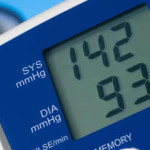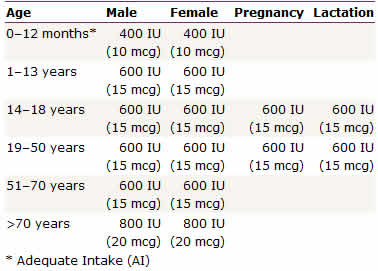Best Foods That Lower Systolic Blood Pressure
Systolic blood pressure is the force of blood against your artery’s walls when your heart is contracting. It is commonly considered as top number and typically higher than diastolic blood pressure (the pressure inside your blood vessels when your heart is not contracting or between beats). Lifestyle approaches are often successfully used to lower hypertension (a medical term used to denominate high blood pressure problem). One of these non-medical intervention treatments is by eating appropriate foods recommended in DASH diet (the Dietary Approaches to Stop Hypertension). The following are some healthy foods that can help lower systolic pressure in adults.
Potassium is one of the most essential minerals to help your body in regulating and maintaining blood pressure (BP). It can reduce excessive sodium (salt) in cells.
We know well that too much sodium accumulated in the blood stream and cells of the body can be bad for your BP, because it can retain water.
 Excessive water that flow with blood through arteries can make your heart work harder. This can make the heart increase its heart rate. As a result, your BP can increase higher than normal. Even Mayo Clinic put potassium deficiencies as one of risk factors of hypertension.
Excessive water that flow with blood through arteries can make your heart work harder. This can make the heart increase its heart rate. As a result, your BP can increase higher than normal. Even Mayo Clinic put potassium deficiencies as one of risk factors of hypertension.
For more detailed information about the role of potassium in helping to lower systolic blood pressure and other its crucial functions and also how much you should consume it, visit this section!
Fortunately, it’s not difficult to find potassium. There are lots of foods that contain this mineral. For instances, you can find it in celery, fruits (such as grapefruit, banana, berries, grapes, and oranges), potatoes & carrots (or other root vegetables), and some veggies (particularly leafy veggies such as collards and spinach).
Magnesium is another essential mineral to help the balance of electrolytes in the body. It is needed to help potassium enter into the cells of the body.
In other words, lack of dietary magnesium can make potassium doesn’t work optimally in helping the body to control the amounts of sodium in cells.
Both magnesium and potassium are often found together naturally in many foods. Almonds, spinach, soymilk, potatoes, broccoli, and banana are some foods rich in magnesium.
Some experts think that vitamin D deficiencies may have contribution to cause decreased enzyme made & released by kidneys. As well we know, your kidneys also have crucial function to help maintain blood pressure.
In fact, kidneys disease ranks at top cause behind secondary hypertension (high blood pressure that is triggered and caused by certain health problem).
Therefore, it is important to make sure you get plenty of vitamin D from your diet. Foods high in vitamin D include certain fish (especially such as swordfish, tuna, sardines, and salmon), free-fat yogurt, and eggs (make sure you eat not more than one egg per day – recommended by the American Heart Association, because egg yolk is also pretty high in cholesterol).
However, make sure you get vitamin D not too much! Below is the recommended dietary allowance for vitamin D (source; the National Institutes of Health):
Veggies and fruits are typically rich in fiber. Does fiber actually work to help lower systolic blood pressure?
There may be no direct link between fiber and your BP. But in fact, fiber can help eliminate some risk factors of hypertension such as high cholesterol and overweight.
See also in-depth information about fiber and blood pressure!
Calcium may be not as essential as potassium when it comes to lowering BP. But some studies showed that it can act as a moderator in contraction and relaxation for arteries and other blood vessels.
Visit here for more detailed information the link between calcium and blood pressure!
Regardless to the issue of whether or not calcium can help lower blood pressure, it is needed by your body especially for your bones. Lack of calcium is linked to high risk of osteoporosis. Free-fat yogurt, low-fat milk, sardines, soymilk and soy products (such as tofu and tempe), and broccoli are some good sources for calcium.
Lowering systolic and diastolic pressures are not only about foods you need to eat more. Eating healthy foods as mentioned above can be almost useless if not followed with limiting foods that can trigger your BP rise.
It’s clear that salt or sodium can directly affect your BP. Many studies found that diet high in salt is linked to high risk of high blood pressure.
Even diet low in salt is the major concern in DASH diet. Fortunately, sodium found naturally in foods is only in small amounts.
Many times, it is added during processing. So, there are plenty options you can explore to restrict it in your diet. See also more ideas on how to reduce dietary salt!
Unfortunately, most people get sodium higher than their body needs (about 3,300 mg a day or even more).
Saturated fats play a key role in increasing bad cholesterol (LDL) in blood stream. Even its impact to the spike up of your bad cholesterol is greater than foods high in cholesterol and trans-fat foods.
And having chronic high cholesterol is linked to high risk of hypertension. Excessive bad cholesterol deposits can damage your blood vessels and put you at high risk of developing atherosclerosis!
If you drink, make sure to do it so moderately (not more than 2 drinks a day for men and 1 drink a day for women)!
Excessive alcohol can damage your heart which then can raise your BP. Even for people with stage I and stage II hypertension, drinking alcohol may not be allowed by doctor.
All foods you eat should be balance. You should not focus on specific foods in effort of lowering your systolic blood pressure.
Veggies and fruits are great for your blood pressure but however they also contain some calories – either for foods rich in potassium, protein, and magnesium.




